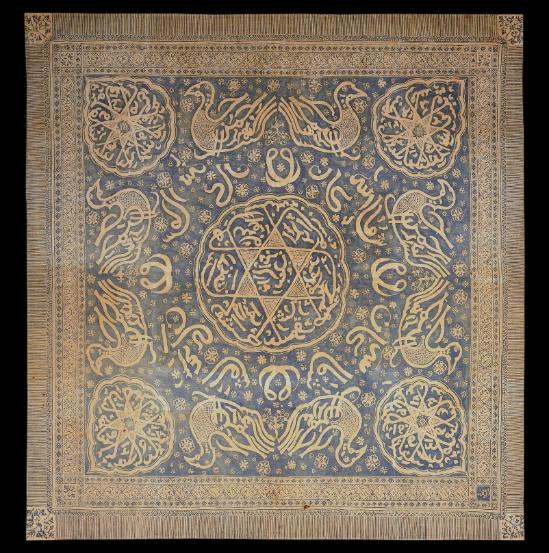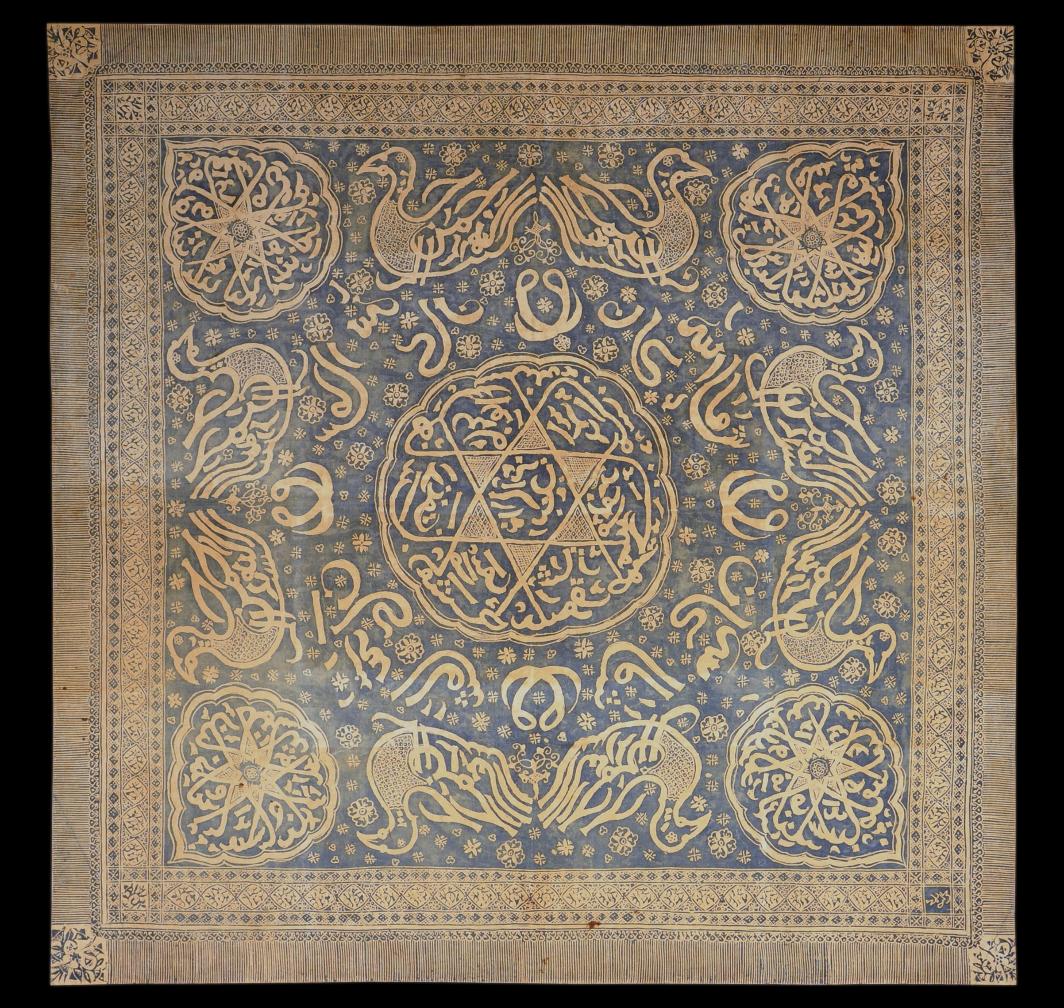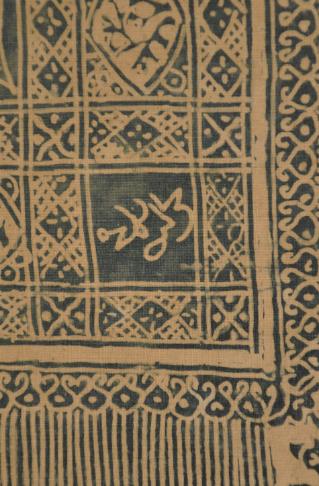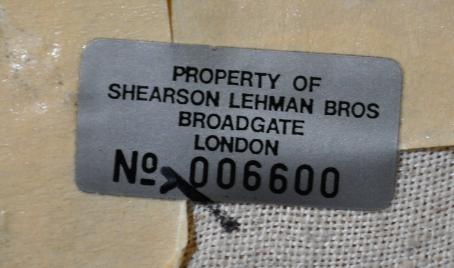
Calligraphic Batik – Java
Calligraphic (Tulisan Arab) Batik
Cirebon (Java) or Jambi (Sumatra), Indonesia
19th century
dimensions: 95 x 92cm
This hand-drawn calligraphic batik comprises a large cotton square resist-dyed with natural blue dye. The writing on this batik is stylised Arabic, or more likely jawi – the localised form of Arabic, but as is often the case with Javanese calligraphic batiks, the writing is largely illegible and most probably served talismanic purposes. The words have been styled into bird and star motifs in a circular pattern around a central star-shaped calligraphic medallion, possibly derived from Sufi precepts, against a blue ground and are interspersed with flower head motifs. The way in which the birds have been formed is unusual compared with other calligraphic batiks that also feature birds.
The star motifs in each of the four corners have eight points (the central star has just six). On Java, octagonal stars enclosing a ninth point are associated with the
Wali Songo, the nine saints who introduced Islam to Java (Heringa et al, 1996, p. 200). The overall array might also have a cosmological aspect – almost like zodiac star patterns against the night sky. Again, this would tally with Sufi notions.
The artist’s name in Arabic (or
Jawi) appears in a small square in the bottom right hand corner.
Such cloths were produced on Java for use locally and for export to Sumatra. They were highly regarded for their protective qualities. Possibly, the cloth was produced at Cirebon, on Java’s north coast. Artists in Cirebon were adept at zoomorphic calligraphy on account of the Islamic reticence at overtly depicting living creatures. Alternatively, Maxwell (2003, p. 338) says that striped end-patterns or borders as seen in this example are characteristic of batiks produced in Jambi on the east coast of Sumatra. Such a cloth in the National Museum in Jakarta is illustrated in Brinkgreve & Sulistianingsih (2009, p. 115) and attributed to Jambi. The same cloth is illustrated in Asian Civilisations Museum (2010, p. 49) and attributed to ‘probably Cirebon for the Sumatran market’.
The origin and purpose of most calligraphic batiks (
batik bertulis) is uncertain. It is possible that square cloths such as this example were worn as an ikat kepala (men’s head cloth). Such cloths might have also have served as a ceremonial hanging or used to wrap or cover a Koran. Other, rectangular, calligraphic batiks might have been used as tomb covers.Batik bertulis cloths are relatively uncommon and are much sought after today. The condition of this example is excellent.
This textile has been professionally conserved and currently has been mounted, again professionally, on an acid-free backing and is beneath a custom-made plastic frame. The textile can be shipped with or without the frame and casing.
Provenance
Lehman Brothers Corporate Collection, UK.
References
Heringa, R. et al, Fabric of Enchantment: Batik from the North Coast of Java: From the Inger McCabe Collection at the Los Angeles County Museum of Art, Weatherhill Inc, 1996; Maxwell, R., Textiles of Southeast Asia: Tradition, Trade and Transformation, Periplus, 2003; Kerlogue, F., Batik: Design, Style & History, Thames & Hudson, 2004; Islamic Arts Museum Malaysia, The Message and the Monsoon: Islamic Art of Southeast Asia, IAMM Publications, 2005; Brinkgreve F., & R. Sulistianingsih (eds.), Sumatra: Crossroads of Cultures, KITLV Press, 2009; and Asian Civilisations Museum, Sumatra: Isle of Gold, 2010.
Inventory no.: 1145
SOLD



(Detail – artist’s signature)

the reverse of the textile’s mounts.)

